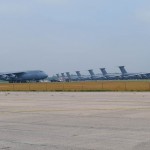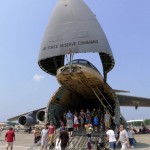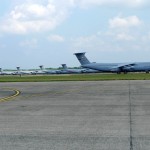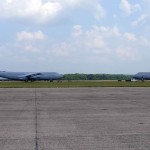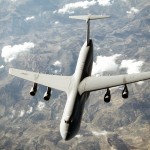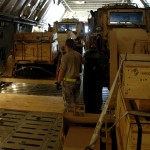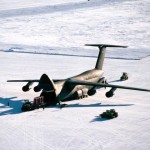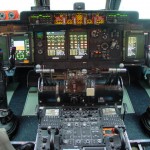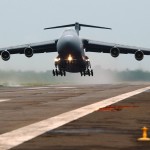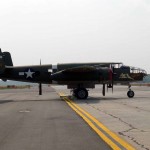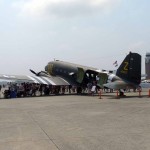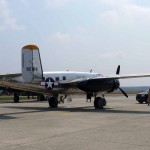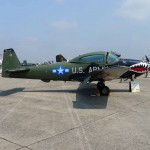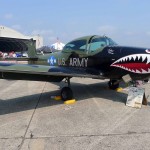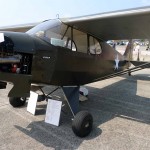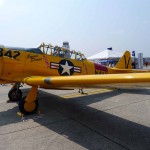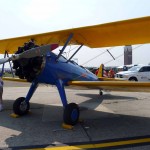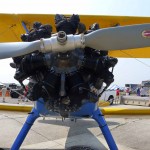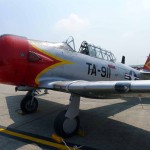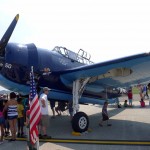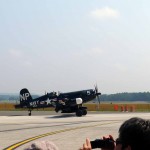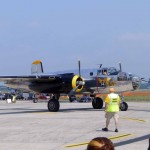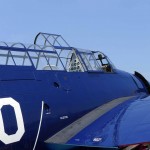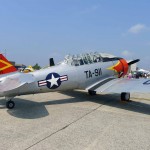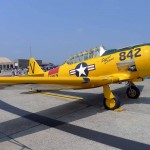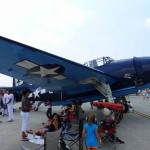
The C-5 is no spring chicken. It has been flying since 1969, with upgrades coming many times over its lengthy lifespan. And like many air force projects, the “Galaxy” cost a lot more than intended.
The massive cargo plane has supported every major American war and crisis since Vietnam and it has supported allies like Israel and NATO states. It is also used to quickly distribute humanitarian aid to disaster zones.
It can put soldiers into combat, fully stocked. A single C-5 can carry 81 troops and 36 pallets of cargo at the same time. It can also carry specialized cargo like the 74-ton mobile “scissors” bridge or a variety of military vehicles and weapons.
The C-5 is easily identified by its four engines, slightly swept wings, fat cigar body going through to the nose, and high T-shaped tail.
The plane is powered by four General Electric TF-39-GE-1C turbofans that put out 43,000 pounds of thrust each. Its 12 fuel tanks carry more than 51,000 gallons of fuel, and the C-5 can ferry 270,000 pounds of cargo 2,150, unload, and fly 500 more miles to another base without refueling.
The C-5A deployed to Vietnam in 1970, where it was used to move equipment and troops. When the war started coming to an end, it was used to evacuate troops and civilians prior to the fall of Saigon. One of the C-5s, loaded with 243 Vietnamese orphans, crashed in April 1975, killing 144 adults and children, including 76 babies. The C-5 was heavily restricted during the investigation of the accident. It was eventually learned that the rear doors were fitted with improper locks, which failed, causing explosive decompression.

There have been several variants of the C-5 produced, as advances in avionics and materials were applied. The C-5As have been either upgraded or retired at this stage in their lives. Most other variants, the C-5B and C-5C are also being upgraded. The C-5M “Super Galaxy” is the modern model, and it will likely be in service until 2040, marking 81 years of C-5 service. The “Super Galaxy” features a glass cockpit outfitted with flat panel displays instead of analog gauges as well as advanced GE CF6 engines that put out 50,000 pounds of thrust each. The result: 1/3 shorter takeoffs, nearly 40 percent higher rate of climb, and increased cargo loads.
There are a few other unique characteristics. Despite its bulk, the C-5 can land on runways that are only 6,000 feet long. The nose lifts up, allowing easy loading/unloading of cargo from both sides of the plane. The C-5 also has drive-on ramps for military vehicles.
Air Cache saw many C-5s parked and flying at Westover Air Reserve Base in Massachusetts during the 2012 Great New England Airshow. Westover is home to the 337th Airlift Squadron of the 439th Airlift Wing, which only flies C-5s.
Specifications
General
Crew: At least four, but usually eight: pilot, first pilot, 1st Officer, two flight engineers, three loadmasters
Payload: 270,000 lb
Length: 247 ft 1 in
Wingspan: 222 ft 9 in
Height: 65 ft 1 in
Empty weight: 380,000 lb
Max. takeoff weight: 840,000 lb
Engines: Four General Electric TF39-GE-1C high-bypass turbofan, 43,000 lbf each (upgraded models have General Electric F138-GE-100 with 50,000 lbf each)
Performance
Maximum speed: 579 mph
Range: 2,760 mi with a 263,200 lb payload
Ceiling: 35,700 ft at 615,000 lb gross
Thrust/weight: 0.22
Armament
Never armed.
Essential Reading and more
Online Resources:
- Wikipedia
- U.S. Air Force Official Factsheet
- Lockheed Martin — Official website
